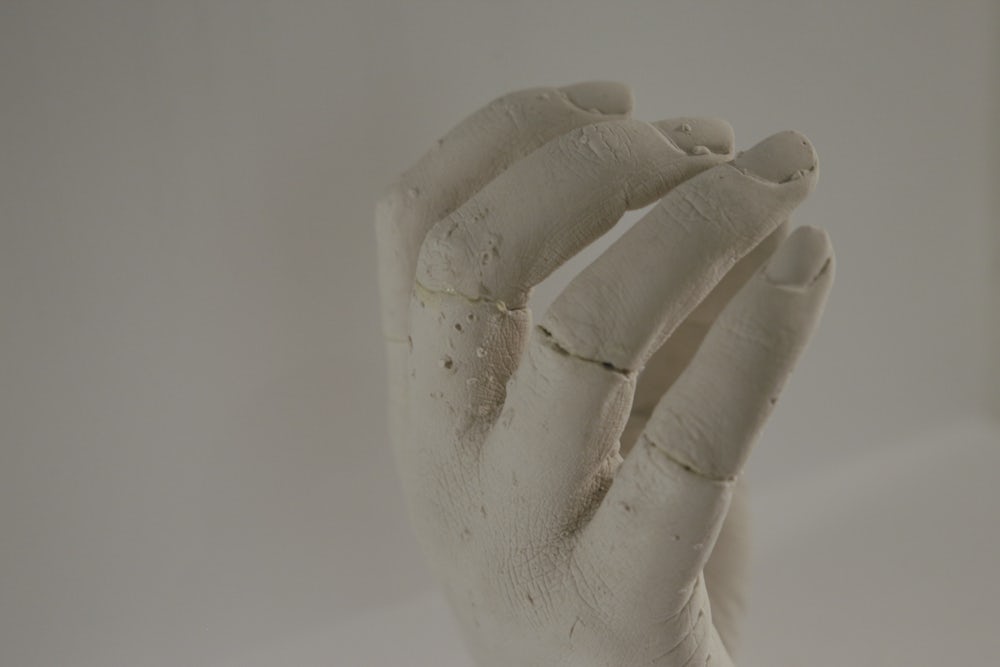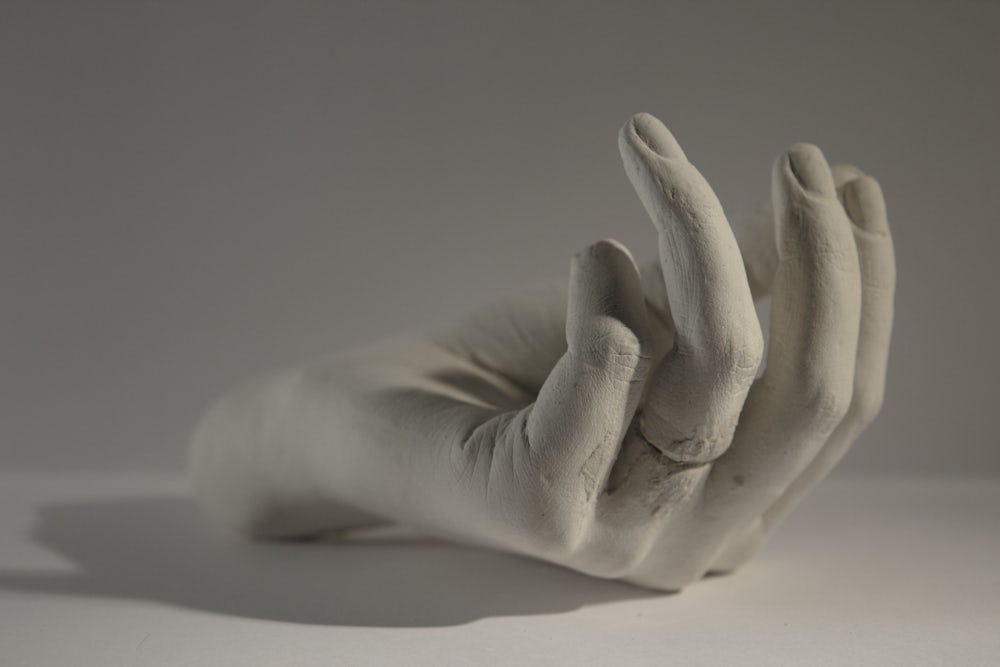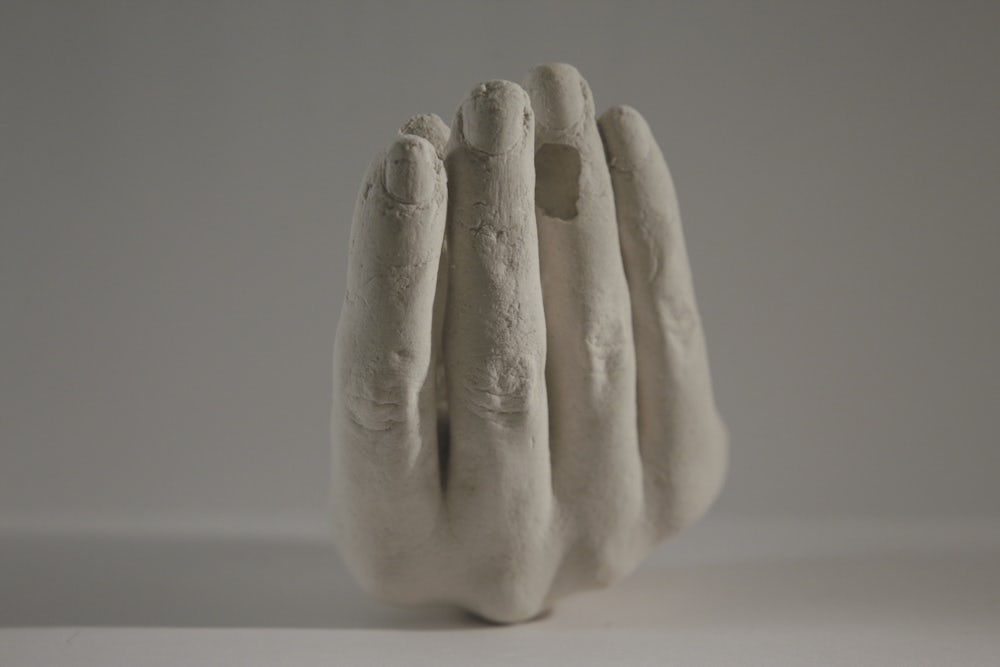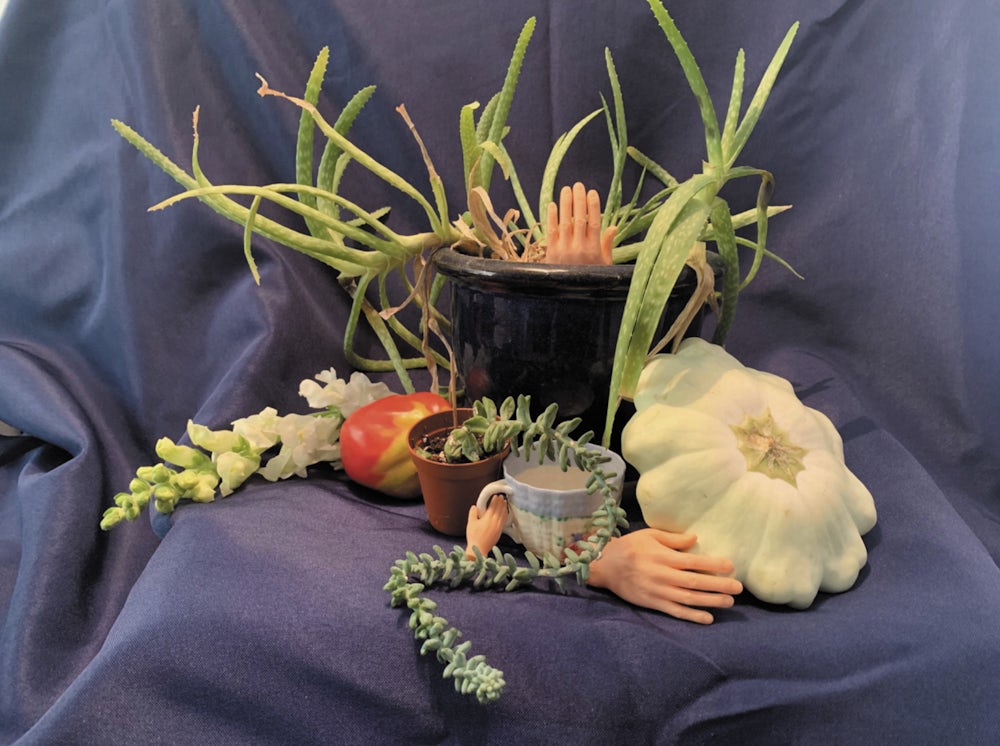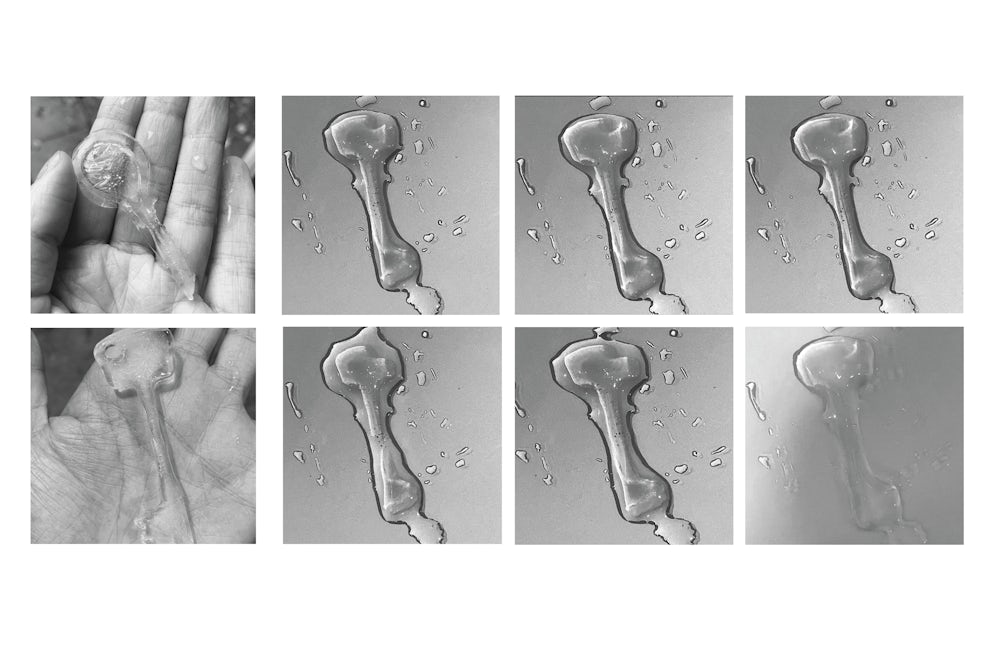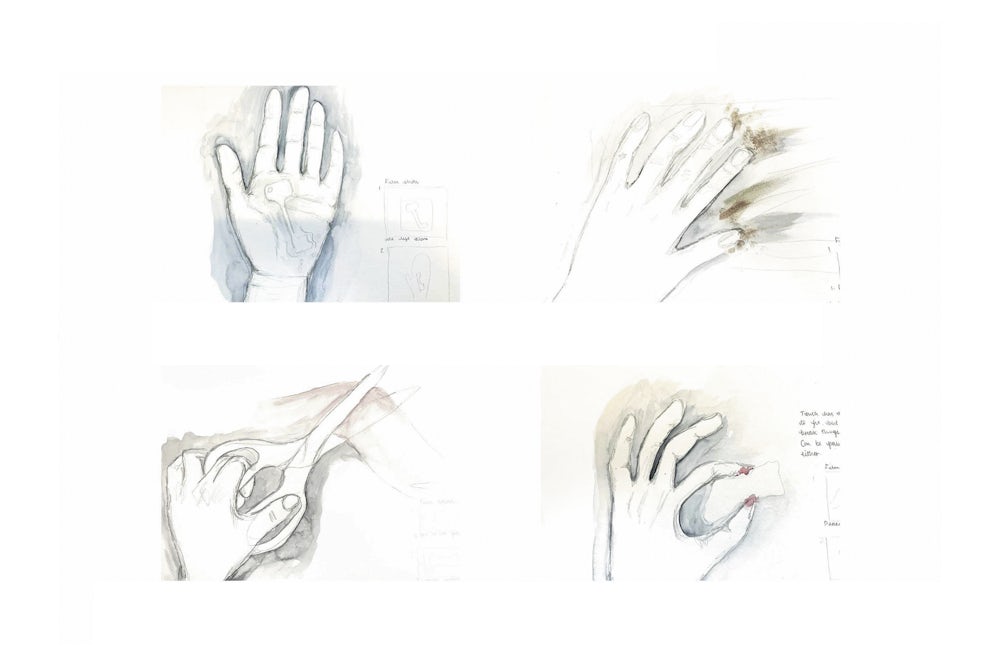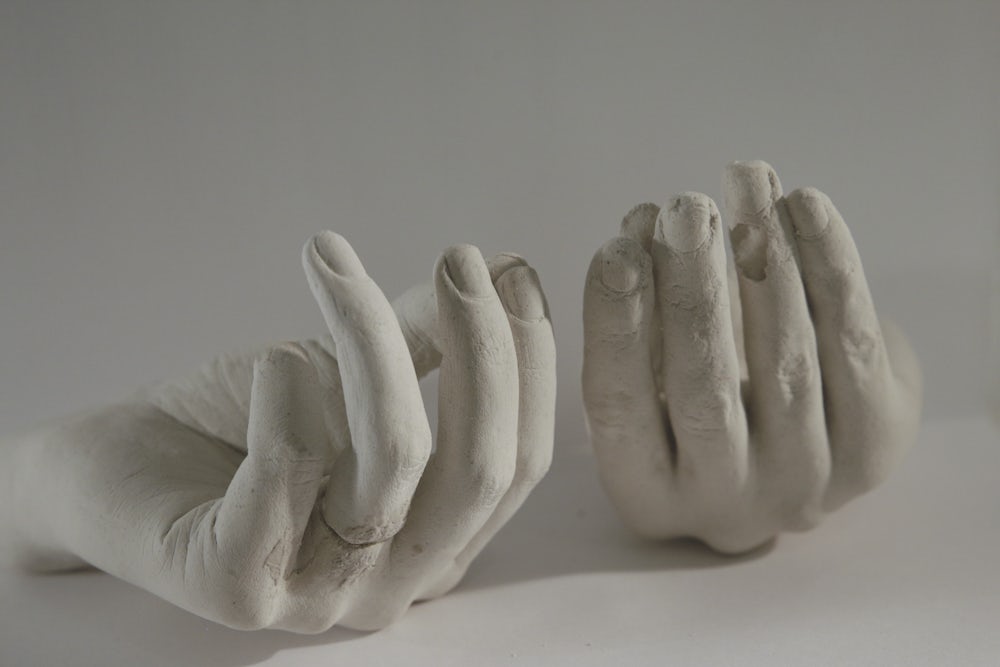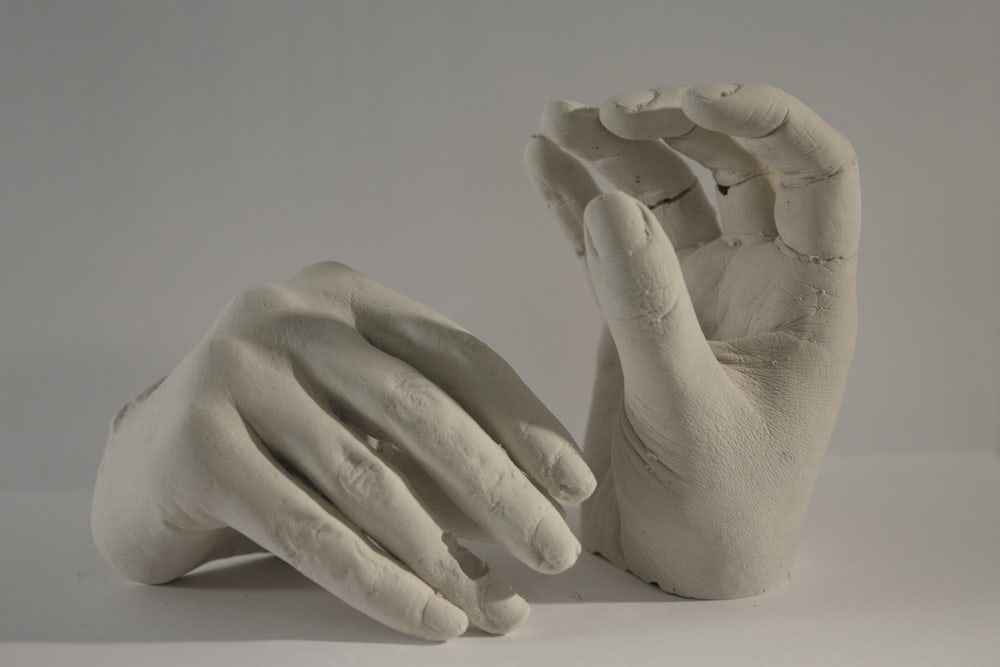Amy Wallace
"How We Touch / What We Can Not Touch:The Tactility of Craft"
Keywords: materials, narrative, objects, photography, documentation
“Touch is central to how we feel, we love and hate”1, it possesses the ability to form human connections- making it a vital aspect in any mediation. My entry into mediation is considering how the tactility of craft can be captured within static gestures. Through the interventions of casting instinctual movements, I am questioning our reaction to touch, the different potential it holds and our thoughts towards broken touch.
My interest in sensory communication came from a quilt that was started by my Mother. The quilt is suspended in an unfinished state due to my Mother losing the ability to use her dominant hand. I have used this story to articulate how the tactility of craft can be used to relay care and familiarity, but also holds the potential for discomfort and grief.
Presently, we primarily rely on visuals for sensory perception, rather than our instinctual touch. Perhaps this is due to contrasting intergenerational or cultural interpretations. I am speculating within my interventions that our separation of touch stems from an apprehension to become implicit in its existence.
If touch holds potentials to relay relational communication between people, what happens when tactility is altered? My initial documentation emulated healing and destructive potentials of touch by removing functionality from culturally representative objects. These interventions alluded to ideas of repair and temporality. Later, I identified the gestures of craft that went into my Mother’s quilt, to capture the exact moments of communicative tactility.
The use of hands is a metaphor when thinking about touch, but by casting these gestures, it triggered a contemplation of natural gestures- actions that are unintentional but universal. Artist Kader Attia proposed that “we are educated to think that everything can be repaired”.2 My gestures are the reaction of discomfort when we realise that human illness and marks of time can never be fully repaired.
Whilst I was casting, I was unaware of the unpredictable replications, creating mediation within its own materiality. By transforming physical representations of my hands into casts the coincidental wounds and details of hands give an uncanny, unsettling quality. The unintentional visual disturbances help create visual tactility and sensory distance. Choosing to capture the gestures in static imagery leaves them in isolation, further reiterating the metaphor of disconnected societal touch. By purposefully using 1:1 casts of my dominant hand to create the gestures, there is a link back to my inspiration from my Mother’s quilt and her own broken touch.
The chosen gestures exemplify how we physically touch, whilst the medium and isolated composition allude to the elements of tactility that are not visual. My act of mediation is the dialogue between my personal experience of tactility and universal actions of craft, whilst generating an aesthetic output to reflect our societal discomfort with touch.

